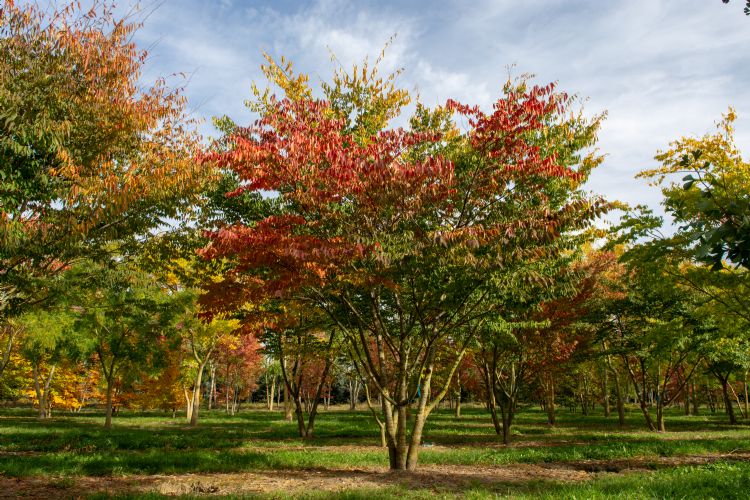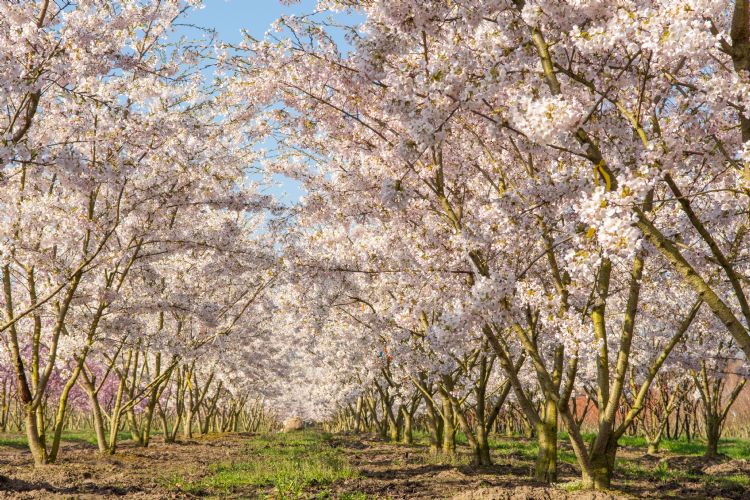Top 10 multistem trees: 'They reveal the true character of a tree' |
|
|
|
|
 |
| 148 sec |
'A multistem tree is a piece of art'
Landscape designers and garden architects are increasingly choosing multistem trees. Marko Mouwen of Ebben Tree Nursery finds it wonderful that this choice creates more diversity and naturalness in the landscape: 'From a production point of view, and also architecturally, we were always obsessively focused on straight, branchless trunks. It's high time we took a more relaxed approach. Trees nowadays are genuine eyecatchers.'
| Zelkova carpinifolia. Photo credit: Ebben Tree Nursery |
Like other forestry nations, the Netherlands historically preferred straight-stemmed trees with minimal side branches due to forestry traditions, aiming for the fewest possible knots. Moreover, a uniform avenue with straight, tall-stemmed trees has traditionally symbolized wealth. Even today, street and avenue trees are pruned to 4.5 meters high to allow trucks and buses to pass beneath.
|
|
'Previously, a swimming pool was the centrepiece of the garden; now, it's a multistem tree.'
| |
|
Trees shaped by human hands
'Crown-lifting is particularly important for safety. But due to limited space in the Netherlands and the ever-present threat of water, our culture is also about shaping every square centimeter of the landscape to our needs,' says Marko Mouwen from Ebben Tree Nursery. 'We often tried turning multistem or characteristic growing trees into tall, straight-stemmed trees. But by doing so, we took away part of their character. People love uniquely shaped trees. This is evident when wedding couples choose these trees for their wedding photographs.'
Back to basics
By creating multistem trees, we draw attention to their natural form; people become more aware of the trunk and crown. 'There are already so many straight structures in public spaces, like traffic poles and streetlights,' Mouwen says. 'Almost everything in private and public spaces emphasizes that our environment is constructed. A multistem tree reminds us of nature and playfulness. It encourages children to climb the tree.'
'Increasingly, we're returning to basics and historical references in our designs,' he explains. 'We study how trees naturally develop without human interference. For instance, deer or sheep grazing on heathland saplings cause trees to develop multiple stems. Or a squirrel buries acorns for winter and forgets them, resulting in a multistem cluster—a multistem tree.'
Aesthetics and practicality
Mouwen compares a multistem tree to a piece of art. 'Aesthetically, it's a beautiful object. You can enjoy its silhouette and character year-round. Other aesthetic aspects of a tree, such as autumn colors, blossoms, and fruit, are temporary.' Multistem trees naturally fit parks and roundabouts, but according to Mouwen, they're also ideally suited for rooftops and containers. 'Moreover, multistem trees remain attractive even if drought kills off some tips. You can prune these off, and the tree's shape remains beautiful, unlike straight-stemmed trees, which become unattractive when their crown dies back.'
Mouwen also highlights a practical aspect: 'A multistem tree's center of gravity is just above the root ball, whereas a straight-stemmed tree's center of gravity is just below the crown. Tall-stemmed trees thus more easily tilt and fall than multistem trees. Multistem trees are safer for planting, even on rooftops.'
|
|
'Besides autumn colors, blossoms, and fruit, we also appreciate the silhouette and character of the tree.'
| |
|
 | | Zelkova serrata |
|
|
1. Zelkova serrata
This fast-growing tree from China, Japan, and Korea reaches 10-12 meters. German botanist Philipp Franz von Siebold brought it to the Hortus Botanicus in Leiden in 1830, from where it spread throughout Europe. With its beautiful golden-yellow and orange-red autumn colors and delicate winter silhouette, Zelkova serrata withstands extreme temperatures and has exceptional winter hardiness. It thrives as both a tall-stem and multistem tree, suitable for rooftop gardens, squares, parks, and industrial areas, tolerating various soils, including sand and clay. It's less suited to streets due to its low branches. The tree prefers warm, sunny, partially shaded locations and is a good substitute for elm due to its pest and disease resistance.
Mouwen: 'I'm a fan of Zelkova, especially after three consecutive hot summers. Everywhere I've been, even outside our nursery, this tree performed well, maintaining its foliage while other species struggled. I especially appreciate multistems that naturally form a canopy, like Zelkova serrata.'
 | | Prunus yedoensis |
|
|
2. Prunus yedoensis
Originally from Japan, this tree grows 6-10 meters tall. Yedoensis refers to Yedo (Edo), the old name for Tokyo. It blooms abundantly in April with white to soft pink almond-scented flowers favored by bees. It suits avenues, broad streets, and parks.
Mouwen: 'This tree is extremely popular—it's number one at our nursery. Its natural canopy shape makes it ideal for many locations, including private gardens.'
 | | Marko Mouwen |
|
|
This article was previously published on August 10, 2023, on the Boomzor
| LOG IN
with your email address to respond.
|
|
|
| There are no comments yet. |
|
| |
Anyone can place small ads for free through their own account.
Place a free ad
|
|
|
|